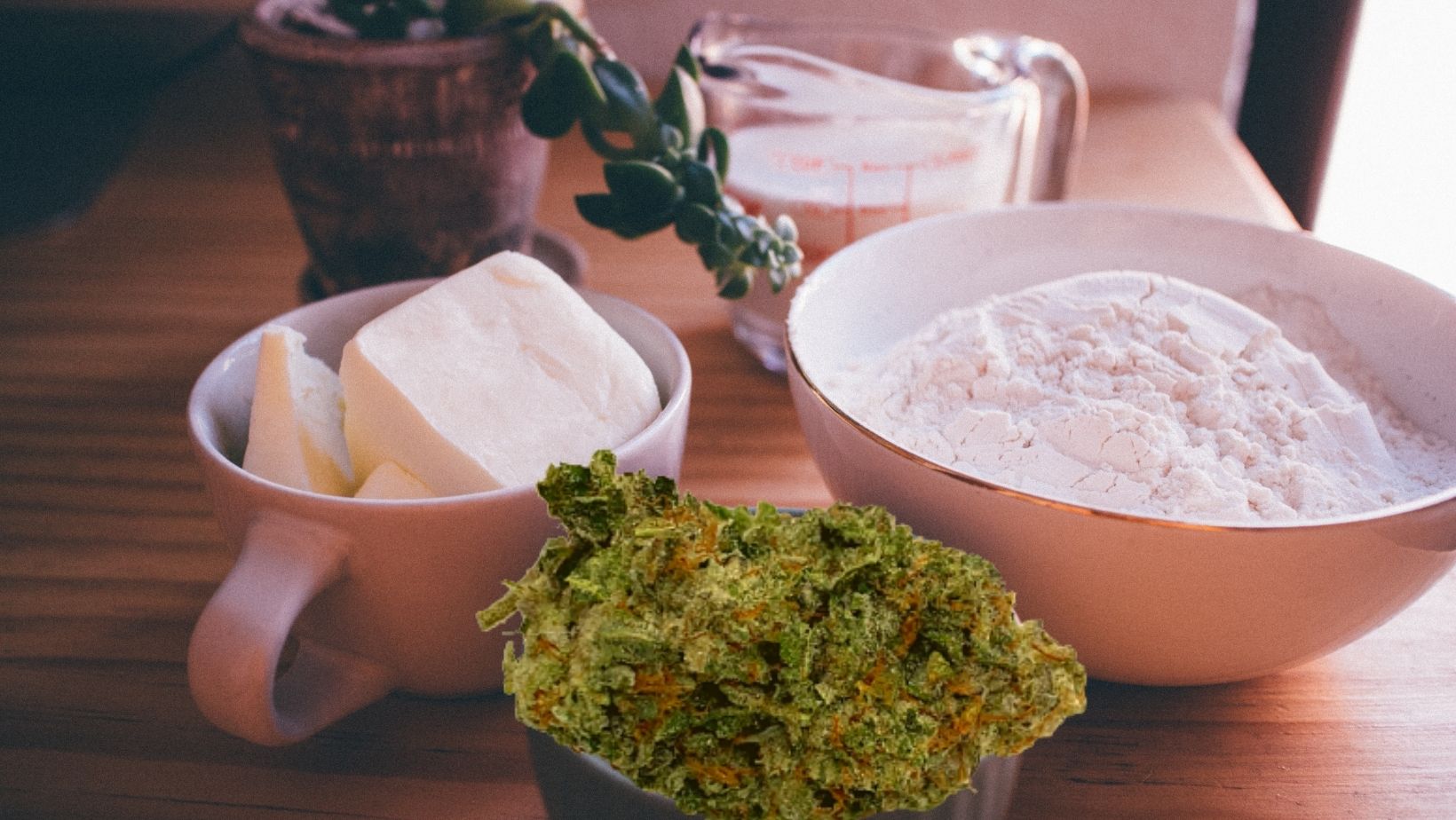Making cannabis-infused butter is a staple skill for anyone interested in making their own weed-infused edibles. The method for making cannabis-infused butter, also known as “cannabutter,” really comes down to personal preference. It is a bit similar to learning how to bake a loaf of bread for the first time. And like bread, cannabutter goes with just about anything. It is the base for most recipes of natural, healthy edibles.
The methods of mastery may vary, but everyone who’s successful follows the same general rules. Here are three guidelines to keep in mind:
- Familiarize yourself with a solid decarboxylation (decarb) process.
- Avoid fake butters like margarines.
- Pay close attention so you do not overheat your butter.
Follow along to understand these important guidelines. Once you have an understanding of the principles, we will cover two different techniques. Depending on what cooking equipment you have at home, there should be a method that suits you.
What is the Decarb Process?
Two of the most commonly extracted naturally occurring compounds, or cannabinoids, are tetrahydrocannabinol (THC) and cannabidiol (CBD). These occur when the cannabis plant is alive and in raw form. In their acid form, when the plant is harvested, these cannabinoids are called THCA and CBDA.
Let’s use THC as our example to better understand this process. THCA properties are not the same psychoactive ones that you find with THC. In fact, THCA is medicinally beneficial along with other acidic cannabinoids. Some of these cannabinoids, including THCA, are said to yield superfood benefits when cannabis is consumed raw. In order to access the psychoactive set of properties of THC for weed-infused edibles, decarboxylation is required.
Decarboxylation is a chemical reaction made up of two important elements: heat and light. Cannabinoids in acidic form are unstable. This means they will react and change when heat and/or light is applied to them. In applying these elements, the carboxylic acid atoms are removed. This in turn changes the chemical structure, turning THCA into THC.
Some common methods of decarboxylation include:
- Drying cannabis in the sun for an extended period of time
- Applying an open flame to the plant (smoking)
- Vaporizing or using a vape pen to heat it
- Use a conventional oven
Which Butters are Best to Use?
You can use salted or unsalted butter from dairy. Some purists go with unsalted, as they want fewer impurities. This and brand selection really come down to personal preference. Unsalted is more versatile for cooking. If you haven’t decided on your intended recipe for weed-infused edibles, then unsalted butter can work for sweet and savoury dishes equally well.
Using clarified butter also comes down to preference. Some recipes call to clarify your butter. Other people find it unnecessary and still yield quality batches of cannabutter.
There are myriad dairy-free or vegan butter options out there. Again, if you want to stay more purist in your approach, then opt for an unrefined or virgin coconut oil. Virgin, refined, or MCT coconut oils will all work.
Cannabinoids bind easily and dissolve in fat. So other fat binders beside these can work. If you want to create a simple base butter to use in your natural healthy edibles, these are a good place to start. Once you have mastered making cannabutter (dairy or dairy-free), then you can always experiment and adjust recipes.
Temperature Control is Important
To best access the psychoactive properties of cannabis, the flower must be heated slowly at a low temperature. This goes back to the decarb process. Like cooking a piece of meat, slowly cooked cannabis can showcase the plant’s juicy properties better than a quick sear.
Crock pots, slow cookers, and instapots are all kitchen tools that have been used to successfully make cannabis-infused butters. That said, these all have different cooking temperatures, so you may have varied results if using a recipe that recommends one of them. To keep it simple, you can cook on a gas or electric stovetop. It’s handy to use a food thermometer, ensuring that you do not exceed 80C.
How to Make Cannabutter (in a Conventional Kitchen)
Now that we have an understanding of the basic principles, let’s look at one recommended technique from start to finish.
Step One
Decarb the cannabis. To make naturally healthy edibles yourself, you can decarb in a conventional oven. You can do this by grinding the weed up and spreading it on a baking sheet lined with parchment paper. Bake the weed anywhere between 30-90 minutes at 110C. You will be able to tell by the moisture content how long this will take. The cooked flower is what you will end up adding to make your cannabis-infused butter. Move the plant around every 10 minutes or so to ensure even heating.
Step Two
Melt butter by adding one cup of water and one cup of butter to a pot. Simmer this on a low heat, letting the butter melt. Avoid any scorching.
Step Three
Place the decarboxylated, ground cannabis into the pot with the melted butter. Simmer between 70-90C for two to three hours. Do not let this mixture come to a rolling boil by stirring it occasionally.
Step Four
Using a cheesecloth (or similar), strain the infused butter mixture into a jar. Place the jar in the refrigerator. After an hour of cooling, see if any water separates. Carefully remove any water content that forms.
Step Five
Enjoy! Use the butter to make your own homemade and naturally healthy edibles. Sometimes finding the right dose of butter is difficult. Each batch can yield a different potencyso experiment carefully and adjust your recipes. Keep in mind that consumed cannabis is slower to take effect than when smoking it.
How to Make Cannabutter (By Alternative Means)
Sometimes you have to know the rules in order to break them. Remember the first guideline? Familiarize yourself with a solid decarboxylation (decarb) process.
Maybe you do not have access to a stove or stove top. If you do not have access to an easy means of decarboxylation, don’t stress—you can still make your own cannabutter but will need to make some adjustments. Earlier we mentioned that it is possible to use a slow cooker for your recipe. Follow these steps if you have a slow cooker.
Step One
Make a coarse grind of the cannabis. You do not want to make a powder, so a hand grinder works well to keep it chunky.
Step Two
Set the slow cooker to 70C. Remember not to exceed 90C.
Step Three
Add the butter of your choice and coarsely ground cannabis. Cook for a minimum of three hours. Stir this mixture occasionally.
Step Four
Turn off the slow cooker and let the butter infusion cool. Then strain it, refrigerate it, and enjoy it!
Now You Can Make Your Own Weed-Infused Edibles
There are so many reasons to enjoy cooking with cannabis-infused butters and oils. Weed-infused edibles remove the stigma often associated with smoking. For health-conscious people, cannabutter provides an alternative to make natural healthy edibles.
Experiment with recipes of your own at home. If you enjoy cannabis and you like to bake, cook, or even just eat, then give it a try. Just remember there are three key principles. Once you understand them, making adjustments to your cannabis-infused butter recipes will be a breeze. You don’t need to have a fully stocked kitchen—access to the cannabis flower of your choice, a type of butter, and a minimum of kitchen tools is all that is needed.


